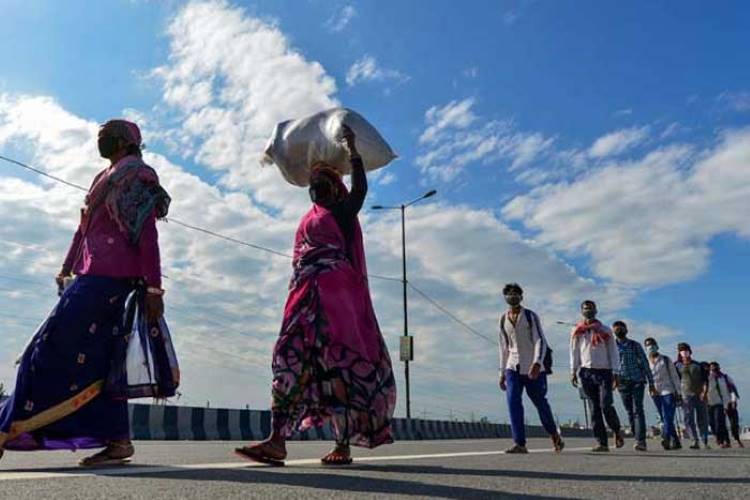
By Rajarshi Datta
Prime Minister Narendra Modi on May 12 announced a Rs 20 lakh crore stimulus package to revive the Covid-ravaged economy and push the country towards self-reliance. The package, worth almost 10% of India’s gross domestic product (GDP) enthused the countrymen who have been waiting for an announcement for a long time. But, finance minister Nirmala Sitharaman’s speech explaining the contours of the spending plan came as a disappointment for most of them.
In simple Keynesian terms, an economic stimulus refers to targeted monetary or fiscal policy to stimulate the economy by increasing aggregate demand through increased employment, consumer spending, investment, and quantitative easing. The government failed the country on this count. The finance ministry’s announcement on May 13 had a bureaucratic imprint written all over it.
READ: Kickstarting Indian economy without burdening government finances
To begin with, the measures for the MSME sector, the backbone of Indian economy, appeared laudable. By widening the definition of MSMEs and removing the difference in classification for manufacturing and services, many more companies will now be eligible for MSME benefits. I fail to understand, though, why it took the government so long to accept this long-standing demand.
By providing indirect liquidity relief to MSMEs and NBFCs, which, in turn, lend to small and medium units, the government appeared to have reinforced its focus on this all-important sector. However, going by the fine print, these indirect measures are ineffective remedies. MSMEs needed immediate ventilator support in the form of direct benefits to tide over the mounting losses. Most MSMEs are struggling to pay salaries and other immediate expenses. Any form of indirect benefits in the next 3-6 months, while welcome, may not be enough for most MSMEs that are struggling to stay afloat, save for a few that are financially soluble. Sitharaman’s press briefing did not contain any such immediate relief. The MSMEs are disappointed, and for good reason. They needed immediate benefits like cash infusion, and not some guarantee coming their way later that will only help those MSMEs which have a strong balance sheet.
India’s smaller neighbour Bangladesh has done a stellar job in providing direct benefits to its apparel industry. This was in the form of subsidised loan for 2 years at 2% interest rate and a payment moratorium of 6 months to help them pay salaries and stay afloat. If Bangladesh could do it with ease, why not India that aspires to become a $5 trillion economy.
READ: India’s storied middle class may be sliding into poverty
Further, the MSME portfolio of banks and NBFCs are already stretched. It will require a huge increase in the risk appetite of financial institutions to lend more to this sector. So, facilities such as emergency collateral-free automatic credit line of up to Rs 3 lakh crore from banks and NBFCs, subordinate debt, etc. may not take off unless there is an underlying assurance from the government or the RBI. Providing a liquidity window to NBFCs / HFCs through SLS and PCGS to banks is expected to help struggling institutions raise money and stay in business. It is a move in the right direction. But the larger ramifications of non-performance need to be factored in. In the excitement of the moment, the government has failed to grasp the depth of existing structural problems and pushing evergreening of loans as a solution. It is very likely that instead of lending onwards, these funds will be used to strengthen the balance sheets of these struggling NBFCs.
On the tax front, some of the direct tax benefits to boost short-term liquidity such as tax refunds to companies are beneficial. But TDS and TCS rate reduction is a temporary measure and is just a jugglery and deferment of tax payments, and that too for non-salaried employees. While it may bring some immediate liquidity in the hands of the targeted segment, it is not a long-term benefit because tax liabilities are not coming down unless tax slabs are reworked. How a tax refund can be part of a stimulus package when it is the rightful monies of taxpayers?
READ: India’s Faustian bargain: Alcohol revenues trump health, welfare
Giving Rs 9,250 crore of liquidity by reducing EPFO contributions is again a cruel joke. EPFO is for the future. By reducing contribution today, you are jeopardizing the tomorrow of a lot of people. The government is forcing us to dip into our own savings today and calling it as a stimulus. Either the government is hoodwinking citizens, or it has lost a sense of understanding.
When our economy is staring at zero GDP growth (optimistically), the immediate need is to shore up demand. Supply side is easily solvable. Demand needs to be stimulated. None of the measures announced yesterday may possibly have the intended effect of shoring up demand. These measures are not what we would call a stimulus because these measures appear more as accounting jugglery. Far more targeted measures could have been announced and immediately implemented. It looked like the finance minister was just going through a text prepared by bureaucrats. The finance ministry could have provided more clarity in its pronouncements and the intended self-reliance that these measures are likely to bring in.
One can only hope that the top echelons of the government would become more sensitive to the needs of the key sectors of the economy and evaluate further measures to shore up business confidence. The economy needs a booster shot, not mild medicines treating symptoms. The insensitivity of the government could damage the vital sectors of the economy and make the India Story a distant dream.
(Rajarshi Datta works in a senior position at a Delhi-based private equity advisory firm. Views are personal.)
